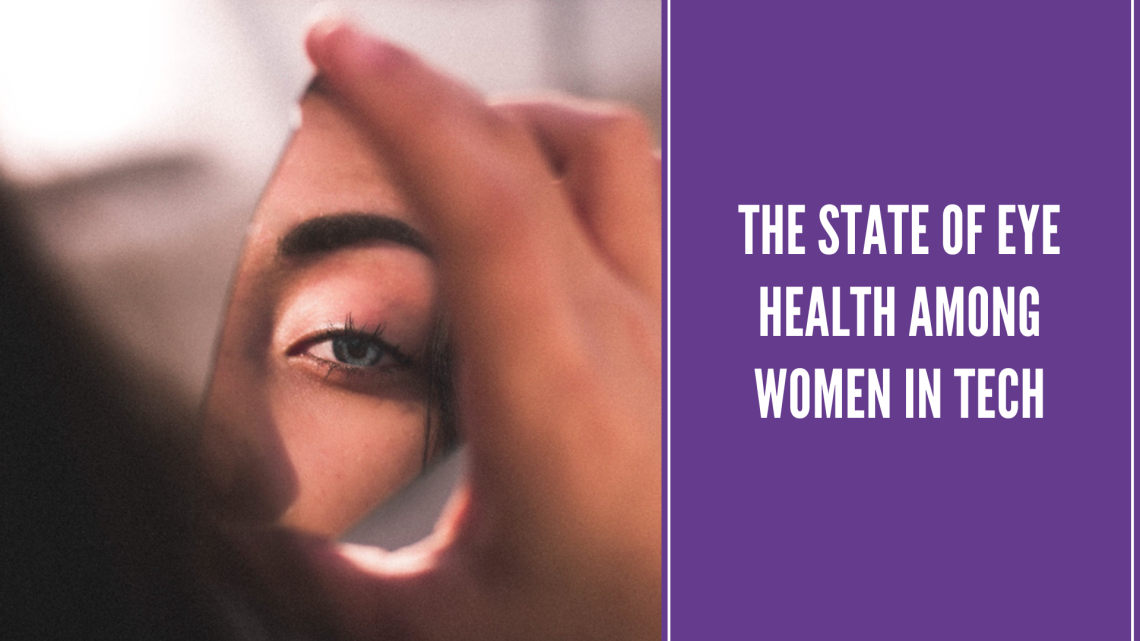
Image source: pexels.com
Poor eye health affects many adults in this day and age. However, the statistics indicate that women may have it worse than their male counterparts. According to insights from Prevent Blindness, women suffer from vision problems more than men. The statistics include women making up 65% of people with age-related macular degeneration, 66% of people who are blind, and 63% of people with vision impairment, among other specific eye health concerns such as glaucoma and cataracts.
While being part of the statistics, women in tech can also shine a light on possible solutions to improving access to better eye health for other women. In this post, we'll look at how the rise of digital work is impacting eye health for women in tech and the importance of having more women representation in the eye health sector:
The Rise of Digital Work
In this digital age, most work occurs on computer and smartphone screens. Over the years, concerns about the harms of blue light emitted by our digital screens have led to questions about how they impact our eye health. Digital eye strain and computer vision syndrome are common topics of discussion, as people experience symptoms like dry eyes and irritation after long working hours in front of screens.
As such, blue light glasses have become a popular go-to solution. This specialized eyewear helps protect the eyes from digital blue light. Many modern electronic devices expose us to more high energy visible (HEV) blue light, and blue light lenses offer a protective shield against this type of light by reducing glare and bringing visual comfort to the wearer.
However, the digital world isn't all bad. Today, emerging technologies like AI foundation models have been a crucial addition to healthcare. RETFound, a first in ophthalmology, has the potential to not only identify sight-threatening eye diseases but also predict general health concerns, including heart attacks, stroke, and Parkinson's disease.
Eye Diseases in Women
As mentioned in our introduction, women report more instances of ocular diseases than men. Most research on this subject confirms that a significant majority of ocular diseases affect women disproportionately compared to men. This is associated with various factors and influences, ranging from biological to cultural and societal, as well as hormonal differences.
For example, dry eye affects twice as many women as men over 50. Dry eye has many causes, some of which are unique to women. Women are also often diagnosed with dry eye six years earlier than men, leading to significant disability as a chronic condition. Women reported high levels of dry eye symptoms, greater use of dry eye treatment, and a greater adverse impact on quality of life.
In our previous post on strategies for improving productivity at work, we highlighted some practices that can also help protect your eyes and alleviate vision concerns. Regular breaks can help boost productivity and let your eyes heal and recover from the constant exposure to digital screens. Taking advantage of the tech available to us can also help, from time management apps to reminders for breaks and hydration, which can also help maintain good eye health while keeping you productive.
Women in The Eye Health Sector
Finally, the state of eye health among women in tech also largely depends on having more representation in the eye health sector. Women play an important role in maintaining global health. However, men continue to hold most leadership positions. While making up 75% of the global healthcare work, less than 25% of the most influential leadership positions are occupied by women.
In the eye health sector, only 28.3% of board members at eye health organizations are women. This is crucial as women in leadership positions in the industry can help address the unique barriers women and girls face when accessing eye care and other relevant resources. Having more women involved in the decision-making processes addressing gaps in eye health provision can help bridge the gender disparity. At the same time, championing women in tech can also promote new innovative solutions that can make eye care more accessible to all.






